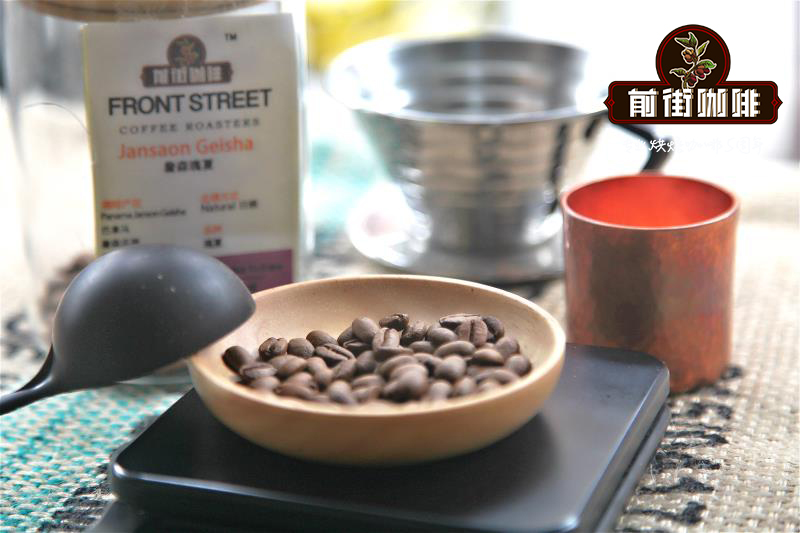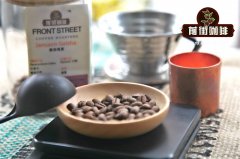Brazilian mojiana Brazilian coffee features taste how about Brazilian mojiana coffee

Professional coffee knowledge exchange more coffee bean information please follow the coffee workshop (Wechat official account cafe_style)
Brazil is the largest coffee producer in the world, accounting for about 30% of coffee production, but because Brazil is located in tropical rain forest areas with relatively flat terrain and few high-altitude mountain forests, most coffee is grown in low-altitude non-volcanic soil areas. And there is not much shade for shading, resulting in the disadvantage that Brazilian beans grow quickly, but the density and soft flavor of coffee does not change much. Coupled with large-scale machine harvesting of coffee beans with a wide range of maturity differences in coffee harvesting at the same time, so that the quality of Brazilian beans is not particularly outstanding has always stayed in the category of commercial beans.
After 2000, because of the coffee competition, the quality of coffee beans produced in the high-altitude areas of the south was appreciated, mainly by the farms around the Minas high platform, and the coffee quality was also the largest among Brazilian beans, such as Sirado in the west of Minas and Matas in the east, Bashiya in the north or small farms in the south, Minas almost became synonymous with Brazilian fine coffee. In recent years, the coffee competition is accurate to be separated by treatment (water treatment / half-washing / half-sun / sun-drying), which has developed a variety of flavors, taste and finish, which is quite different from traditional Brazilian coffee. In particular, the half-sun method and the sun method perform best, the aroma of clean and low-acid fruit increases, so that the rich chocolate flavor reduces the farm-picked coffee without machine harvest, and the fully ripe coffee beans are picked by hand, with citrus and fruit tea aromas. the wet aroma is with the fragrance of black tea, showing the elegant aroma of jasmine and herbal tea, while the aftertaste is full of oolong tea. It tastes very fresh and gentle, which is an amazing work rarely seen in Brazilian beans.
The Mogiana region of Sao Paulo Paulo is located in southern Brazil, between the states of Sao Paulo and Minas Gerais; it sits in rugged valleys. There are three main coffee growing areas in Brazil: Mogiana, Sul Minas and Cerrado, of which the Morgiana region stands out.
The coffee grown in this area is a mixture of Bourbon, Mundo novo and Catuai. There are rich fertile soil, stable temperature throughout the year, rolling hills and uneven terrain, coupled with differences in microclimate, which bring subtle changes in acidity and fruity, making Morgiana's coffee plump and clean. In the production of blended coffee, there will be a more obvious sweetness and better mellow thickness and softer acidity. Its overall sense of performance is more distinct. The product of SC17/18 target particles looks more uniform and larger.
Up to 1200 to 1400 meters above sea level, the annual rainfall is abundant, reaching more than 1800 mm, but it will not cause heavy rain, with an average annual temperature of 19 ℃, so the growth of bean fruit is slightly slower, but the density is compact. Although the yield is less, the aroma and flavor of Brazilian plateau beans can not be compared with that of Brazilian plateau beans. Add a little soft fruit sweetness to the nutty and chocolate flavors; it becomes thicker and sweeter in a deeper baked state, with a smoky taste and a lingering aftertaste.
Important Notice :
前街咖啡 FrontStreet Coffee has moved to new addredd:
FrontStreet Coffee Address: 315,Donghua East Road,GuangZhou
Tel:020 38364473
- Prev

Why is Jamaican Blue Mountain coffee so expensive? What kind of coffee is Jamaica Blue Mountain one?
Blue Mountain Coffee (Blue mountain) is probably the most famous single-origin coffee, and it has a long history. It can be said that you have heard of Blue Mountain Coffee even if you have never tasted boutique coffee. Why is it so expensive? Blue Mountain coffee beans are expensive because of their low production and are always in short supply. The real blue mountain beans must come from the local Jamaica Blue Mountains of Jamaica.
- Next

San Juan Coffee Ecuadorian Coffee Features Ecuadorian coffee beans taste
Professional coffee knowledge exchange more coffee bean information please follow the coffee workshop (Wechat official account cafe_style) country: Nicaragua production area: San Juan varieties: Bourbon Certification: F.T Fair Trade Association Certification Product name: Nicaragua Madriz Province San Juan Cocoa River Cooperative Nicaragua Madriz San Juan de Rio Coco Nicaraguan Coffee
Related
- Detailed explanation of Jadeite planting Land in Panamanian Jadeite Manor introduction to the grading system of Jadeite competitive bidding, Red bid, Green bid and Rose Summer
- Story of Coffee planting in Brenka region of Costa Rica Stonehenge Manor anaerobic heavy honey treatment of flavor mouth
- What's on the barrel of Blue Mountain Coffee beans?
- Can American coffee also pull flowers? How to use hot American style to pull out a good-looking pattern?
- Can you make a cold extract with coffee beans? What is the right proportion for cold-extracted coffee formula?
- Indonesian PWN Gold Mandrine Coffee Origin Features Flavor How to Chong? Mandolin coffee is American.
- A brief introduction to the flavor characteristics of Brazilian yellow bourbon coffee beans
- What is the effect of different water quality on the flavor of cold-extracted coffee? What kind of water is best for brewing coffee?
- Why do you think of Rose Summer whenever you mention Panamanian coffee?
- Introduction to the characteristics of authentic blue mountain coffee bean producing areas? What is the CIB Coffee Authority in Jamaica?

